There are many ways to improve your photos. Here are 55 ways for you to become a better photographer and take better photos. Please let us know if you find them helpful.
1. Know your camera(s).
On a rainy day, grab your camera and learn how to change your settings without looking. The more you do it, the quicker it will become. Keep doing it until it becomes second nature. If you have an understanding parent, child or partner have them shout out different aperture, iso and shutter speed values and see how long it takes to set them.
2. Read your manual.
If you’re anything like me, you probably don’t read the manual whenever you buy a new gadget or toy. In fact, my 5-year-old has to wait much longer than he should for me to figure out how his new toys go together. But a camera manual has a world of information in it that will help you understand the camera better. And the better you understand it, the better your images will be.

My well read Sony A7Riii Manual
3. Check your settings.
I guarantee that at some point you will turn on your camera, point it at your subject and look at the back of the camera ready to see something amazing only to discover that your settings were all wrong and your image is under exposed, over exposed, blurry etc. Know how to check your settings and know how to change them.
4. Shoot every day.
It’s a funny thing but when you’re a professional photographer you can go days without touching a camera. However, when I was learning I tried to use my camera all the time to build muscle memory, familiarity and knowledge of camera settings.
5. Change up the height of your camera.
We see the world from roughly 5 and a bit feet off the ground (give or take). And as such we often keep our camera at this height when we’re first starting out. But try changing it up. Get down low or get up high – it will certainly make a difference to your images. If photographing children or animals, try getting down to their eye height.
6. Understand your camera’s metering modes.
Spot, center weighted average, evaluative, zone. Each camera will have different metering modes, and each does a different thing. Learn when, and when not, to use each one.
7. Know when to use manual, and when not to.
Most photographers seem to teach that you should always use manual. I don’t agree. I have photographed dozens of weddings and most of them I have used Aperture Priority until the nighttime shots. Your camera is very clever – use it!
8. Learn the autofocus modes.
Autofocus is autofocus, right? Wrong – AI Servo, One Shot, Locked. Different brands have different names for their focus modes and there are different times to use each one
9. Use manual focus.
Autofocus is great. Manual focus is better (sometimes). If you’re shooting something like a landscape then using manual focus (especially in Live View) will ensure you nail the focus.
10. Always have your camera near.
Have your camera near, with memory card and charged batteries. There’s nothing more frustrating than an amazing sunset that goes uncaptured because your camera wasn’t ready to go. It can be demoralizing to see everyone else on Instagram has captured that amazing sunset and you haven’t. Also, you never know if your dog, cat or even child may do something cute!
11. Study images that you like.
And ones you don’t. I don’t particularly mean images on Instagram or Facebook, but the images all around you. Clothing poster images in Tesco, magazine covers, even the photos on your food packaging. Think about what you like about them, and what you don’t.
12. Learn to appreciate your competition.
It’s easy to look at our competition and put down their work. But you’ll learn and grow so much more if you can see the positives in their work.
13. Buy photo books and then read them.
Yes, they look great on coffee tables. And they may even make you look sophisticated and interesting. But they’ll serve a much better purpose if you read them. Books (especially those written for beginners) will be written in such a way that you will get a more rounded education than if you just dip in and out of websites.
14. Go to a workshop.
Okay, I’m biased. I run landscape photography workshops in Scotland, but I still believe that one of the best ways you can learn is by attending a workshop and getting some quality one on one time with an experienced photographer.
15. Learn how to read a histogram.
Honestly, I put this off for at least a year (Okay four). But looking and evaluating a histogram is the best way to understand what’s going on in your image. A histogram will not trick you like an overly bright/dark LCD screen.
16. Shoot RAW.
No excuses. This is a simple one. If you want the best images possible, shoot RAW. There is so much more data captured in a RAW image than even a large/fine JPG. If you must shoot in JPG, then make sure you are shooting JPG+RAW.
17. Work on your composition.
Learn the rules. Then ignore them. I believe that composition works better when you go by the “feel” of an image. Yes, rule of thirds, golden spiral can be useful but are you really not going to capture an amazing scene or moment because they don’t conform to one of those rules? No!
18. Study nature.
Nature is amazing and it provides us with so many beautiful sights. Study what makes it beautiful and incorporate that into your images. Maybe it’s the symmetry of a flower or the curve of a wave that appeals to you – whatever it is try and bring it into your images.
19. Watch the edges!
Most cameras have loads of megapixels. More than we will ever need. So, unless your lens doesn’t let you get any wider (and you can’t walk back any further) there is no need to risk cutting off something important (like an arm or a tree).
20. Be careful of the background.
I remember one of the first weddings I photographed when taking the formal portraits outside. I was careful with my camera settings and posing and I loved the images on the back of the camera. But on closer inspection on the computer I noticed I had positioned them with a tree growing out of their head. Queue much Photoshop work to correct my error – but needless to say I haven’t done it since!
21. Fill the frame!
This is hard to do. Really hard in fact. But get close to your subject and fill the frame. Be respectful of your subject (if they’re a person or animal) however.
22. Talk to your subject.
Probably more relevant if you’re shooting portraits than landscapes or products for this point! But by talking to your subject you’ll put them at ease and relax them. The more relaxed they are, the better your images will be.
23. Give clear direction.
Unless you’re working with a proper model, your subject will probably need direction. Learning to give direction is one of the hardest things you will ever do. Learning to give good direction is even harder. Practice on a partner or a child (or a well-trained dog) without a camera in your hand. The more you do it, the more natural it will feel.
24. Slow Down.
Something I teach on every landscape workshop. Often, we are tempted to run from place to place to get as many different shots as possible, especially if the weather is doing wondrous things. But slow down and take your time. Compose properly and ensure you have the right settings. One great photo is better than 5 mediocre ones.
25. Use a tripod.
The most important piece of equipment you will ever own (and don’t say what about the camera!). Not only will the tripod slow you down (see number 24) but it will also open up the possibility of using longer shutter speeds for different effects or lower ISO.
26. Hold the camera properly.
Hold the camera with 2 hands. If you’re right-handed, have your right hand ready to use the shutter button and supporting the right-hand side of the camera. Your left hand supports the base of your camera, or if you’re using a long, heavy lens, supporting the lens. Your left hand can then be used for zooming and manually focusing.
27. Stand properly.
If you’re not using a tripod, stand properly. Plant your feet about shoulder width apart for a solid base. As a right-handed photographer, I try to put my left foot in front of my right with my knees slightly bent.
28. Get rid of the camera strap if you’re using a tripod.
Camera straps are great if you’re using multiple cameras at a wedding. Other than that, I hate them! Personal preference aside, if you’re going to be using a tripod all day then get rid of the strap. It will get in the way and, if it’s slightly windy, it can rock your camera ruining your long exposures.
29. Understand light.
Photography literally means “drawing with light” so it should come as no surprise that to understand a photograph you have to understand light. I don’t mean the physics necessarily, but understanding how light interacts with scenes and objects. Harsh light for instance probably isn’t what you want when photographing landscapes, but you may want it for some edgy product photography. Play with light to see how it affects a scene for better understanding.
30. Live in the shadows.
A lot of photographers talk about minimizing shadows in imagery, but I don’t agree. I would say that shadows are important. They give an idea of depth and the shape of something so you can add an extra dimension to your images.
31. Patience is key.
Landscape photography is all about patience. Very rarely do you turn up at a location and get the lighting conditions you want. You’ll usually have to wait for it – sometimes for hours. I often take a book or listen to podcasts to pass the time.
32. Intentionality is usually the difference between a pro and an amateur.
Intentionality of lighting, blur, underexposure, overexposure will be the things that set the top pros apart from the amateur. An intentionally underexposed or harshly lit photograph will most likely be better than one that is underexposed by accident. Before I take a photo, in my mind I have to know why I am taking it that way.
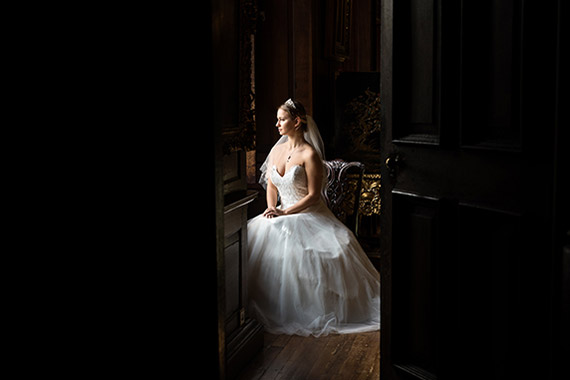
An intentionally underexposed image for added drama
33. Limit the number of photos you can take.
In the days of film, we were limited by the film in the camera. Digital photographers don’t have this limitation, so I often see a scatter gun approach by new photographers. I challenge you to go out on a shoot and limit yourself to 24 or 36 shots. I guarantee that your images will be stronger, and you will have less chaff to separate from the wheat.
34. Delete your old photos.
Another thing I preach is to delete old photos. This way you won’t be tempted to try and make a silk purse out of a sow’s ear (or polish a turd), but instead you’ll go out and take new photographs.
35. Have a consistent post shoot process.
When the images are on my computer, I bring them in to Bridge and give each image I may want to edit a rating of 3. Then I go through all the 3’s and rate the images I will edit as a 5. Everything that is not a 3 or a 5 gets deleted straight away. That way I have a clean and tidy workspace ready for me to start my editing. It also looks less overwhelming to see 30 images that need editing rather than 250.
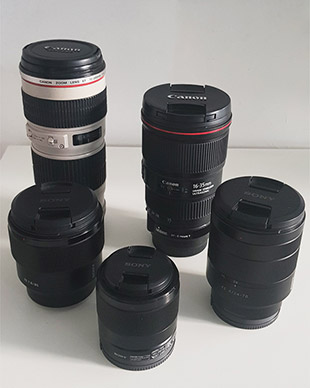
Horses for courses. Each lens serves a different purpose.
36. Know your lenses.
Each lens has different properties. Some distort, some compress. Your fisheye won’t be appropriate for acting headshots, while your telephoto is no good for studio work. Also, learn where each lens is sharpest – there are loads of tutorials that will help you figure this out. Once you know your sharpest aperture try and use it as much as possible.
37. Use prime lenses.
Prime lenses are amazing. Sharper than the best zooms, you’ll invariably get a better result using a prime lens. The payoff is less flexibility. I love the challenge of shooting with a prime lens; its restrictions make me be more creative and innovative.
38. Only carry what you need.
Unless you’re training for a multi-day trek across Peru, you probably don’t need to carry more stuff than you need. Going on a portrait shoot? Leave the 10 stop ND filter at home. Or maybe you’re off to do some light trails in the city? In that case the telephoto won’t be much good. A lighter bag will do wonders for your back and for your mood.
39. Be aware.
Be aware of what’s around you. Don’t stand in someone else’s shot, don’t walk backwards into a road, don’t put your tripod out as wide as you can down a busy city street. It’s easy to become engrossed in what you’re seeing through the viewfinder so just remember to keep looking around you.
40. Weather watch.
Know the weather forecast and plan accordingly. Going out for sunset? Then plan your clothing situation for the end of the shoot, not the beginning. The temperature can drop dramatically after sunset and you don’t want to get caught out without a jacket when it’s freezing. Photography is quite sedentary so you would be better to take more clothes than you think you need.
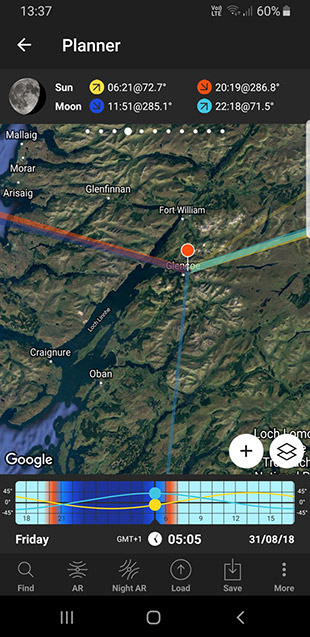
A screenshot of the PhotoPills photography App
41. Use Apps.
My two favorite apps are TPE (The Photographer’s Ephermis) and Photopills. These apps allow me to plan pretty much my whole shoots months in advance. From sunset time to sunset position, full moon information to Milky Way visibility – these apps have it all.
42. Look at your old photos.
I hate my own work. So much so I did a blog post about it a while ago. But it’s the understanding of what is wrong with my old work that has allowed me to improve my newer work. Study your images and be your harshest critic – understand where you went wrong.
43. Realize your family will (probably) be your biggest fans.
And that’s great. We all need supporters but if the only people you show your work to are your family then you’ll probably only get good feedback. Search out feedback and CC (constructive criticism/critique) from other sources. Remember though that this is usually given freely so if asked, please reciprocate.
44. Have a project.
Having a project will allow you to focus on your images and build a more coherent portfolio. Without a project your portfolio can be a random assortment of snapshots.
45. Develop a style.
In a similar vein to having a project, a set style can allow your portfolio to flourish and look polished and professional. But don’t be afraid to constantly revaluate and change your style.
46. Think small.
Out shooting landscapes? Don’t forget to think small. A dew drop on a leaf or the texture in a frozen puddle are just 2 examples of detail shots that will look great.
47. Don’t just photograph pretty things.
We can all make a lovely photo if the subject is pleasing to the eye without too much difficulty. But why not try to take something less visually pleasing and make an interesting photo? Street photographers do this all the time. For example, two intertwined forks carefully lit can make for a really interesting image.
48. Learn how to edit.
It was said by Ansel Adams that the “Negatives were the score and the print the performance.” That saying needs to be updated for the digital age to the “RAW files are the score and editing is the performance”. If you can’t edit, and edit properly, you need to learn. Editing will take your images to the next level. Why not book Photoshop Lessons today?
49. Buy better gear.
This is going against the grain of most other photographer’s advice. But the simple fact is that better gear will take better images BUT ONLY IF YOU USE IT PROPERLY. If this weren’t the case, then none of us would buy anything other than entry level DSLRs and Kit Lenses. But first, invest in yourself.
50. Invest in yourself.
Slightly contrary to the previous point, I would advise you to invest in yourself. Book on for workshops as I have said previously, but also take the time to improve yourself by watching YouTube or reading books. Photography takes time to master. Give yourself the time to learn.
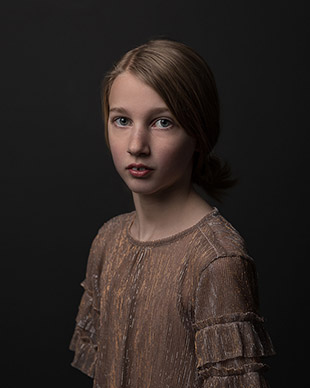
Example of my fine art portrait photography inspired by the classical painters
51. Use other art forms as inspiration.
My portrait style leans heavily on the Renaissance and Baroque art period in terms of lighting, posing and style. Go to exhibitions and galleries to see how other artists build their work (leading lines, rule of thirds etc., etc.)
52. Stay in the moment.
The reason most of us want to photograph something is to capture a memory of a moment or because it’s beautiful. So, don’t forget to enjoy the moment or be enchanted by its beauty.
53. Always look for a composition.
Even if you haven’t got your camera keep looking for photographs. It may be a bit cliché, but I make a 3×2 rectangle with my thumbs and index fingers to try and help me picture a scene.
54. Get outside of your comfort zone.
Try something new. Push yourself to experiment. Whatever it may be that you think you wouldn’t enjoy or be good at, just give it a go. I never wanted to try boudoir photography, but I did a couple of shoots, and while I can’t say I enjoyed it or would do it again, I’m glad for the experience.
55. Enjoy it.
If you’re not enjoying it, chances are your images will not be as good as you may hope.
About the Author:
Matt from Visuals of Scotland provides landscape photography workshops and tours across Scotland as well as wedding photography and photography training to amateurs and aspiring professionals.
Go to full article: 55 Ways to Become a Better Photographer
What are your thoughts on this article? Join the discussion on Facebook
PictureCorrect subscribers can also learn more today with our #1 bestseller: The Photography Tutorial eBook
The post 55 Ways to Become a Better Photographer appeared first on PictureCorrect.
from PictureCorrect https://ift.tt/3bERTCk
via IFTTT






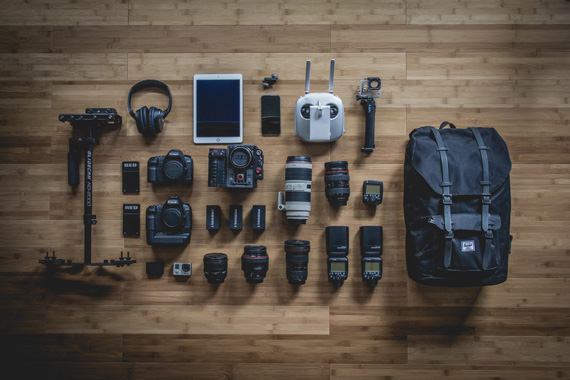
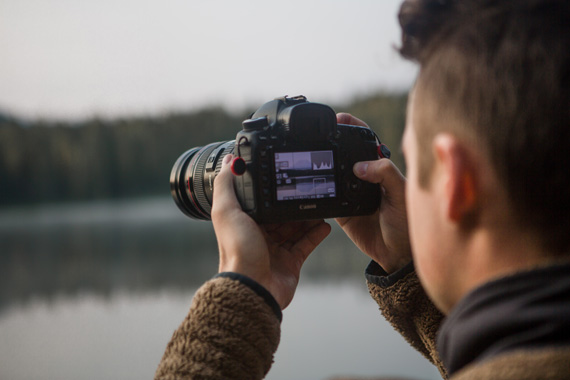
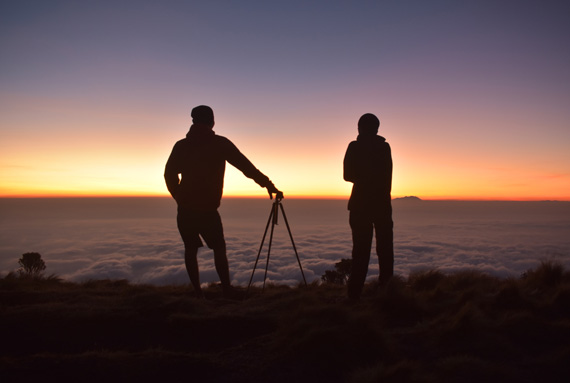
0 kommenttia:
Lähetä kommentti